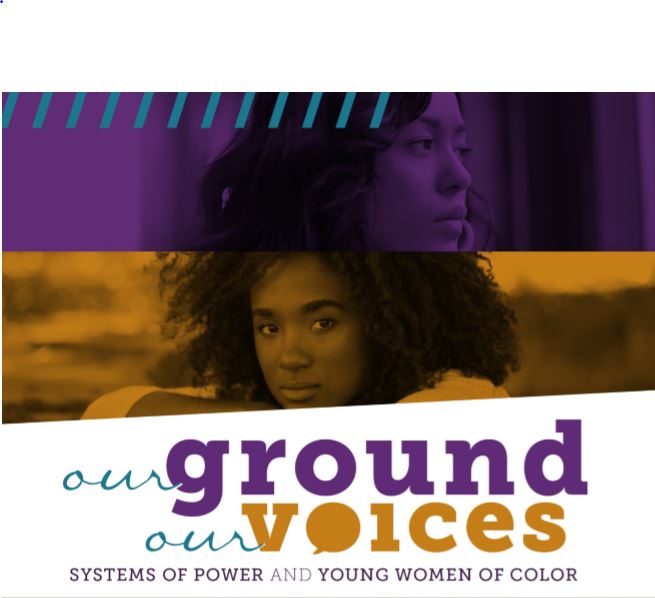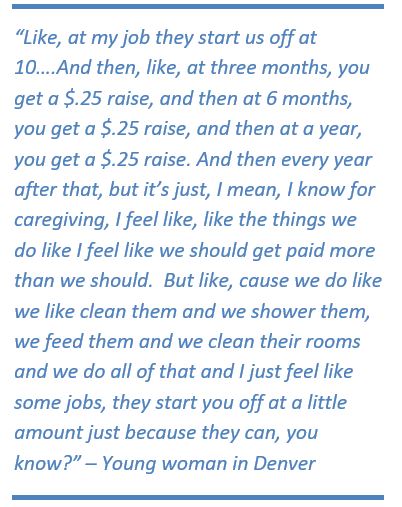Bringing Visibility to Young Women of Color
The Cen ter for Law and Social Policy (CLASP) recently released Our Ground Our Voices, a brief that focuses on the systems of power that underlie structural barriers and block young women of color from achieving economic justice. Systems of power are defined as the beliefs, practices, and cultural norms that serve as the foundation on which individuals and institutions build their lives. These systems are rooted in social constructions of race and gender and are embedded in history (colonization, slavery, migration, immigration, and genocide) as well as present-day policies and practices. Systems of power are oppressive and define relationships between marginalized communities and the dominant culture; they also shape social norms and experiences within marginalized communities.
ter for Law and Social Policy (CLASP) recently released Our Ground Our Voices, a brief that focuses on the systems of power that underlie structural barriers and block young women of color from achieving economic justice. Systems of power are defined as the beliefs, practices, and cultural norms that serve as the foundation on which individuals and institutions build their lives. These systems are rooted in social constructions of race and gender and are embedded in history (colonization, slavery, migration, immigration, and genocide) as well as present-day policies and practices. Systems of power are oppressive and define relationships between marginalized communities and the dominant culture; they also shape social norms and experiences within marginalized communities.
Young women of color are uniquely positioned at the intersections of systems of power rooted in race and gender. As a result, young women of color experience structural barriers, such as financial strain, homelessness, low-wage work, mental health, educational equity, exposure to violence, and involvement with the criminal justice system in unique ways. While not all young women of color are affected by the same structural barriers, they’re all rooted in ground tainted by the race-based and gender-based systems of power.
In recent years, we have seen movement building at the local, state, and national levels for equal rights for women. Equal, however, doesn’t mean equitable. For instance, women in full-time job are paid less than their male counterparts at 80 cents for every dollar paid to men. For women of color, the gap is even greater. In 2017, young women of color experienced poverty at nearly twice the rate of white young women. The wage gap and poverty rate disparity experienced by young women of color is just one example of how an intersectional race and gender lens helps to identify disparate outcomes.
Failure on the part of policymakers and practitioners to explicitly consider the unique position of young women of color in this nation has gone on for too long. It is time for us to recognize that the outcomes young women of color experience are not essential characteristics or pathologies; they are the product of the roots and the ground on which young women build their lives. Only by understanding and naming the roots and the ground that produce outcomes for young women of color can we begin to dismantle these barriers and challenges and avoid replicating inequity. Central to this effort is bringing visibility to young women of color, large-scale investments, and systemic and policy change. 
Women of color have recently gained unprecedented access to positions of power in Congress. In this context, we have an opportunity to create meaningful change with strong advocacy from policymakers, coalitions, educators, community-based organizations, philanthropy, and the workforce sector. Stakeholders and advocates focused on youth employment can build competence of staff, youth and local policymakers about the structural barriers young women of color experience, especially low-wage work, financial strain, and educational inequity. Youth employment partners can also explicitly include young women of color in policy conversations and collaborate with organizations focusing on them to begin to dismantle these structural barriers in programs and practice. These efforts will bring increased visibility and create partnerships that lay the foundation for lasting systemic changes.
Please contact Nia West-Bey, Marlen Mendoza, and Whitney Bunts for any comments or concerns.
